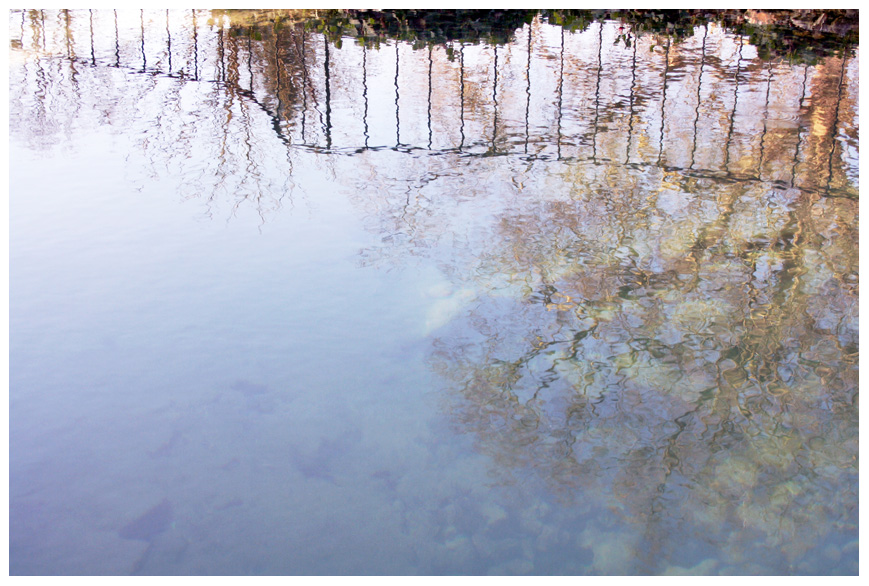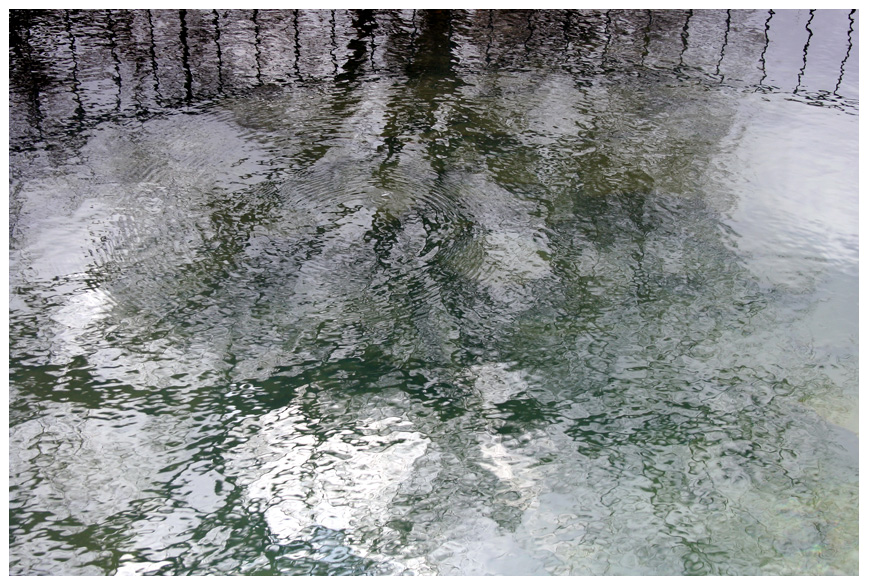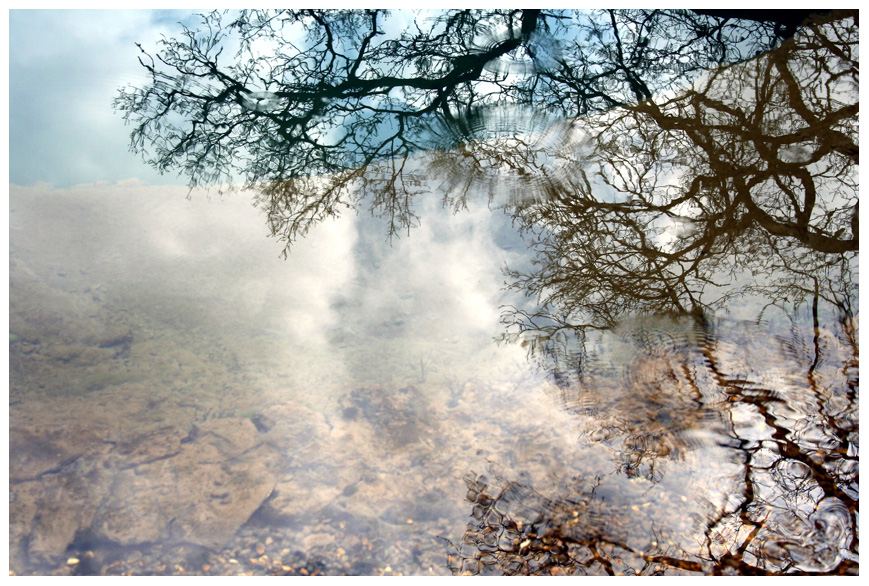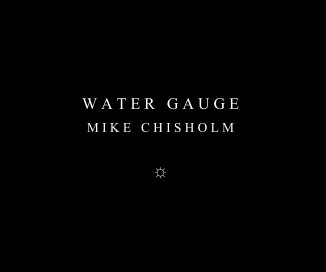A selection from the series WATER GAUGE
The spring at Mottisfont Abbey, Hampshire, is a circular pot set in the ground, about 12 feet in diameter and about 12 feet deep, neatly lined with flint and chalk, and surrounded by an iron railing. It is usually filled to the brim with clear, mobile water, constantly replenished from a natural spring, which runs off into a shallow, gravel-bottomed channel, which in turn curves away and feeds, via two cascades, into the River Test.
There is something uncanny about gazing into its upwelling, gravity-defying water: it has the paradoxical quality of a film run in reverse, or a Moebius strip. It is easy to believe that such places were once sites of veneration: liminal places, where land and sky are confused, a thin boundary between our world and the Otherworld, where some kind of communication might be possible.
The name of "Mottisfont" reflects its role in Saxon times as a meeting-place ("moot by the spring"). The formal integration of the spring into the ornamental landscape of the Abbey was done in the eighteenth and nineteenth centuries, in the same mixed classical and antiquarian spirit that established grottoes and mazes elsewhere. It is a place where visitors can walk across well-kept lawns, lean on a solid railing, and briefly catch the eye of an unexpected, unsettling abyss.
It was often said that the font never ran dry. But, for the first time in the decades I have been visiting Mottisfont, it stopped flowing in 2006, and for several months the level fell. The water became green and stagnant, and the stonework was exposed. Whether this was an indicator of climate change, or simply the result of a blockage, I don't know. But it was hard not to see this unprecedented event as a warning, issued at a place -- a sort of gauge -- where the titanic balance of natural forces meets, and can be measured by, our human gaze.
Mike Chisholm, 2013
A full preview of the Blurb Book of this series is available:













